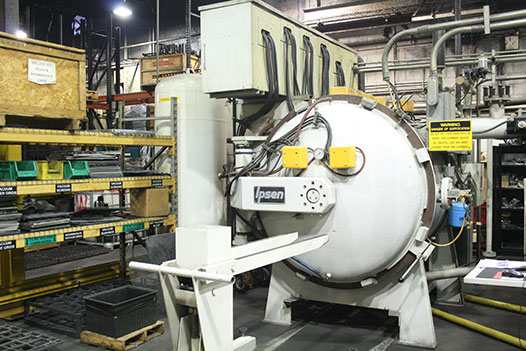Things You Should Know: Quenching Metal – Explained
January 15th, 2018If you have ever been to a real blacksmith’s forge or watched one of the popular metal-working reality TV shows, you likely have seen the professionals using quenching heat treatments such as oil quenching. It differs from other common steel heat treatment processes such as case hardening, tempering steel and precipitation hardening and it can be quite dramatic, with steam rising from the cauldron of whatever medium the metalsmith prefers for just the right effect. But for those not used to working with red-hot pieces of metal, the whole process can be a little mysterious. Let’s take a closer look at the concepts behind quenching metal and why one might choose one medium over another.
What Is Quenching?

How Do Metalworkers Do It?
The basic method for quenching steel or metal is to plunge the metal into some sort of liquid or, in other cases, forced air. There often will be a large burst of steam as the red-hot metal hits the surface of the room-temperature liquid. In fact, the steam plays a role in whether the smith has to stir the metal around in the liquid to prevent pockets of moist air.
What Are the Options for Media?
There are a lot of different types of quenching liquids, and each has its particular uses. Water is an effective and simple option, but it also has some significant drawbacks. It cools metal very quickly and helps it reach its maximum level of hardness. However, it can also lead to cracking or distortion of the steel, compromising its utility and potentially rendering it useless.
Many metalworkers chose alternate media such as oils, polymers or salt water. In some cases, air convection is used. Each of the options comes with a specific quenching speed or rate. The slower the metal cools, the higher the chance of changes to the microstructure. Water’s quench rate, for example, is much faster than that of mineral or cottonseed oil.
Why do Metalsmiths Do It?
Metal goes through a complicated set of states as it has been heated and begins to cool. At various parts of the process it can be brittle and need tempering in oil, lead baths or salts. In order to control the finish product’s brittleness, ability to withstand tensile stress and overall strength, the metalworker must carefully control which states the metal reaches and how quickly. A misstep in any part of the process could lead to unsuitable steel.
Of course, the use of the metal is of particular importance. The blade of a weapon requires an entirely different approach than metal that will be used as bolts on a shipping container, for example. The quenching procedure allows for variations in control that yields the right metal product that the metalsmith is looking for.

